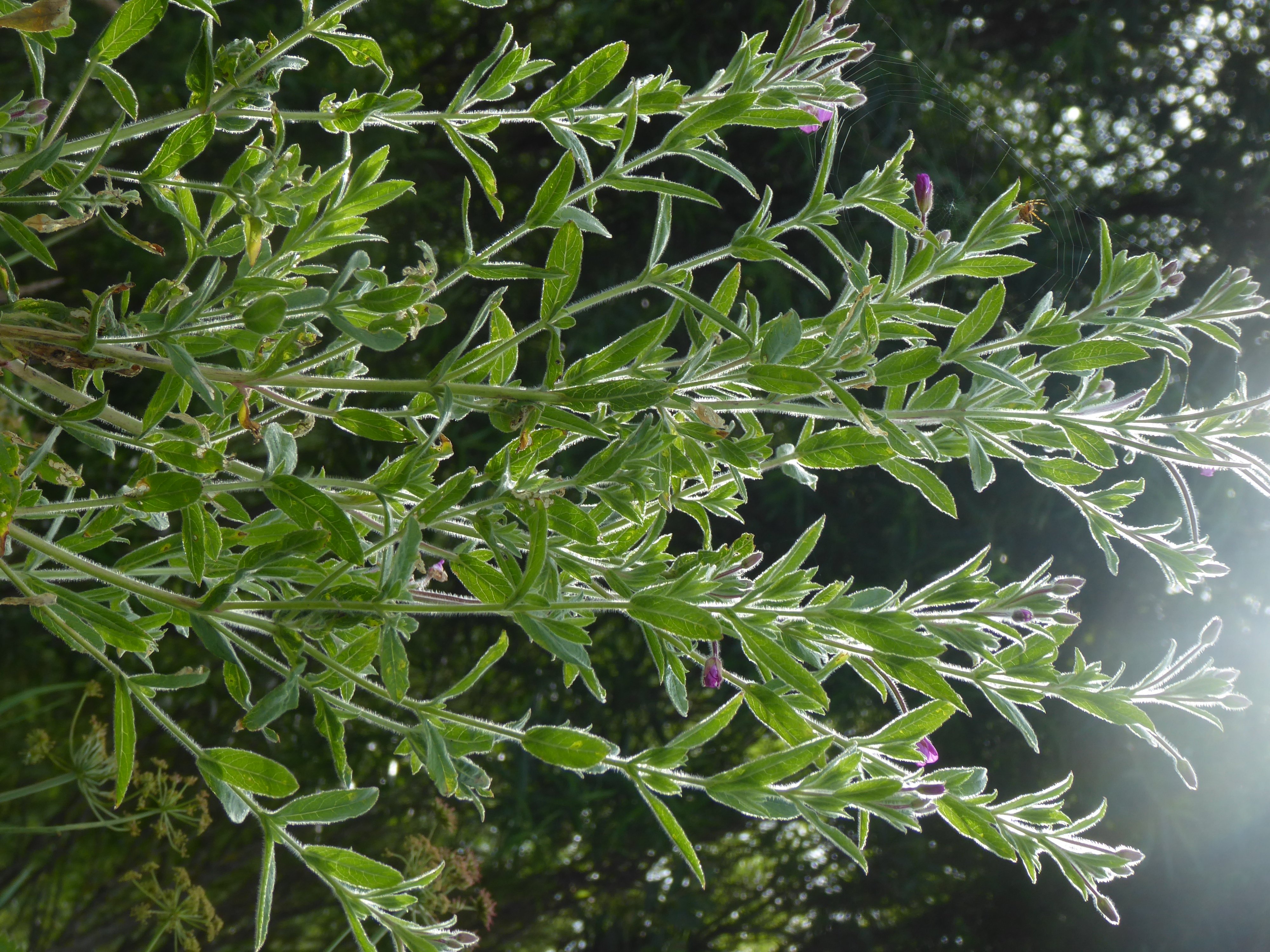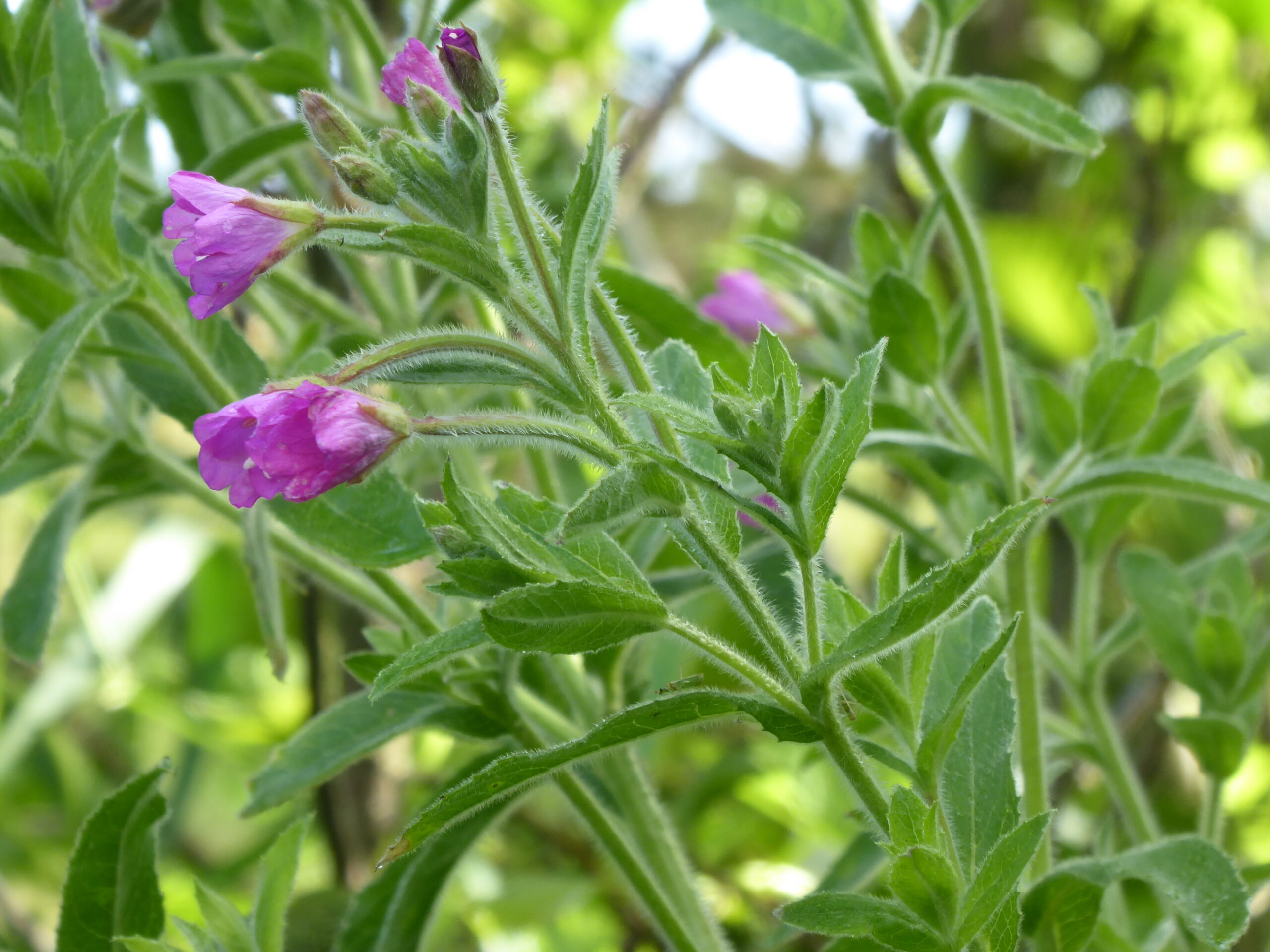I’m on a learning curve with plant identification and have been relying on cross-referencing websites to help me so far, but today I managed to formally identify the Willowherb using my Collins Wildflower Guide Key for the first time. This reference book is very comprehensive but uses botanical terminology in a flowchart style to eliminate different species. I knew I would need a bit of time to learn some of the terms.
With the Willowherb, the first bit was easy. Is the plant upright, or prostrate? Upright.
So I moved on to question 2, which concerned the stigma. I knew this was inside the flower. Was it 4-lobed or knob-shaped? I saw a white 4-lobed thing inside the flower.
“Go to >3”. This was about hairs on the stem. I had to look up ‘glandular’, ‘glabrous’ and ‘appressed’. Glandular means with glands i.e. raised like when you have goose-pimples. Glabrous means without hairs. Appressed means pressed close to, but not fused with. The stem was hairy and the hairs though fine stuck out from the stem, as you can see from the picture.
On to question 4. About the leaves and flowers. Interesting. Did the leaves slightly clasp the stem or not and were the flowers pale or deep pink? The leaves do slightly cup themselves round the stem and the flowers are definitely deep pink. In the photo they look more purply-pink.
Conclusion – It’s a Great Willowherb (Epilobium hirsutum), also known as Hairy Willowherb, nearly 2 metres tall, hairy stalked with slim oval leaves and deep pink flowers. It loves a damp habitat, so pond margins, marshes and watermeadows are good.

I plan to go back over previous posts and check them out with the Collins guide just to make sure. I will post any updates and discoveries.
